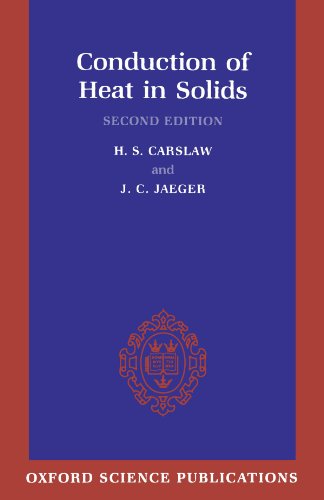Conduction of Heat in Solids pdf
Par peterson carl le vendredi, août 19 2016, 01:27 - Lien permanent
Conduction of Heat in Solids by H. S. Carslaw, J. C. Jaeger


Download eBook
Conduction of Heat in Solids H. S. Carslaw, J. C. Jaeger ebook
Publisher: Oxford University Press, USA
Format: djvu
ISBN: 0198533683, 9780198533689
Page: 517
Jaeger: Conduction of Heat in Solids (Oxford University Press, Oxford, 1959) p. Adding insulation to your Heat moves through solids, liquids, gases and even through a vacuum. Heat Conduction: Lumped System Analysis – Heat Transfer in Semi infinite and infinite solids – Use of Transient – Temperature charts – Application of numerical techniques. The primary mode of heat transfer in solids is. Conduction Firefighter Conduction. The governing equation for heat transfer by conduction is: Conduction Equation. UNIT II CONVECTIVE HEAT TRANSFER 10. Asked by: kunal 35 views Heat_and_Temperature · science-5th. Heat can be transferred from one place to another by three methods: conduction in solids, convection of fluids (liquids or gases), and radiation through anything that will allow radiation to pass. Here are quick definitions, how they apply to your attic, and how to fix them: 1. Conduction is essentially heat transfer through solids. It is also a term that describes processes affecting the atmosphere, waters, and solid earth. Heat can flow by conduction, radiation or convection. Heat always flows from an area of high energy to an area of low energy. Improving your home's energy efficiency is one of the best investments you can make, paying tax-free dividends immediately in the form of lower heating costs. Convection is the name for a means of heat transfer, as distinguished from conduction and radiation. Conduction is heat transfer within solids or between contacting solids. Warm materials always transfer their heat to cooler materials.